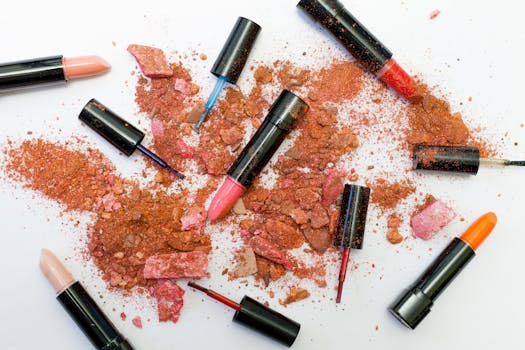Correct Storage of Cosmetics: How to Store Your Cosmetics
Cosmetics are an essential part of many people’s daily routines, enhancing beauty and boosting confidence. However, improper storage can lead to product degradation, reduced effectiveness, and even skin irritations. Understanding how to store your cosmetics correctly is crucial for maintaining their quality and longevity. This article will explore the best practices for cosmetic storage, the impact of environmental factors, and tips for organizing your beauty products effectively.
The Importance of Proper Cosmetic Storage
Cosmetics are formulated with various ingredients that can be sensitive to environmental conditions. Proper storage not only preserves the integrity of these products but also ensures safety for the user. According to a study by the American Academy of Dermatology, improperly stored cosmetics can harbor bacteria, leading to skin infections and other dermatological issues.
Factors Affecting Cosmetic Longevity
Several environmental factors can impact the shelf life and effectiveness of cosmetics:
- Temperature: Extreme heat can cause products to separate or change consistency, while cold temperatures can alter their texture.
- Light: UV rays can degrade certain ingredients, particularly in products containing vitamins A and C.
- Humidity: High humidity can promote mold growth, especially in products that contain water.
Understanding these factors is essential for creating an optimal storage environment for your cosmetics.
Best Practices for Storing Cosmetics
To ensure your cosmetics remain effective and safe to use, consider the following storage tips:
- Keep it Cool: Store cosmetics in a cool, dry place away from direct sunlight. A temperature range of 15-25°C (59-77°F) is ideal.
- Avoid the Bathroom: Bathrooms often have fluctuating temperatures and high humidity, making them unsuitable for cosmetic storage. Instead, opt for a bedroom or a dedicated beauty cabinet.
- Use Airtight Containers: For products that come in jars or open containers, consider transferring them to airtight containers to minimize exposure to air and moisture.
- Organize by Type: Group similar products together (e.g., skincare, makeup, tools) to make it easier to find what you need and to keep track of expiration dates.
- Label Your Products: Use labels to indicate the purchase date or expiration date, especially for products that have a shorter shelf life.
Special Considerations for Different Types of Cosmetics
Different types of cosmetics may require specific storage methods:
- Liquid Foundations: Store upright to prevent leakage and ensure even distribution of ingredients.
- Mascaras: Replace every three months and store them in a cool, dry place to prevent bacterial growth.
- Skincare Products: Products containing active ingredients like retinol or vitamin C should be stored in dark containers to protect them from light.
- Perfumes: Keep perfumes in their original boxes and away from heat sources to maintain their fragrance integrity.
Case Study: The Impact of Improper Storage
A notable case study involved a popular skincare brand that faced a significant backlash after customers reported skin irritations. Investigations revealed that many users stored their products in bathrooms, leading to bacterial contamination due to high humidity. The brand launched an educational campaign on proper storage, resulting in a 30% decrease in customer complaints and a 15% increase in sales as customers felt more confident in using their products.
Conclusion: Key Takeaways for Cosmetic Storage
Proper storage of cosmetics is essential for maintaining their effectiveness and ensuring user safety. By understanding the factors that affect cosmetic longevity and implementing best practices for storage, you can extend the life of your beauty products. Remember to keep cosmetics in a cool, dry place, organize them effectively, and pay special attention to the unique needs of different products. With these strategies, you can enjoy your cosmetics at their best, ensuring that they continue to enhance your beauty routine for as long as possible.
